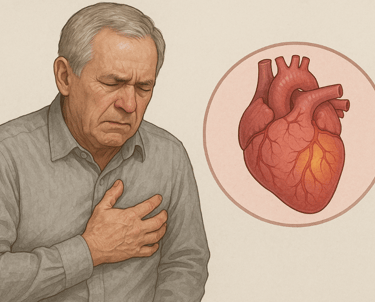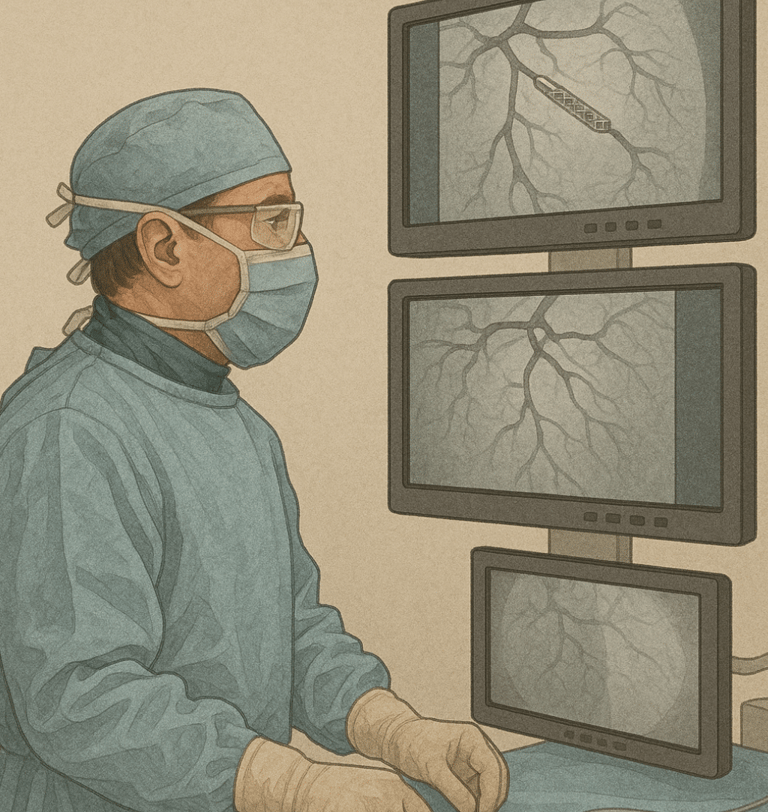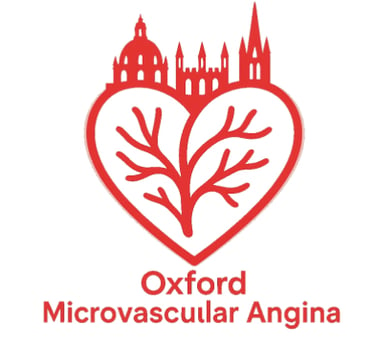Introduction Video of Dr De Maria

What is Angina?
Angina is the form of chest pain originatin from the heart. It can manifest in different ways, ranging from a dull ache to a sharp, stabbing sensation. It's essential to pay attention to associated symptoms, such as shortness of breath, nausea, or sweating. Especially in patients with diabetes, shortness of breath can be an angina equivalent. These could be signs of a heart-related issue. However, chest pain can also stem from gastrointestinal problems, muscle strain, or respiratory issues.
Cardiac chest pain is typically related with a mismatch between oxygen demand and oxygen supply to the heart. Narrowing in the vessels supplying the heart (macrovascular) or a dysfunction of the small capillaries of the heart (aka microvascular dysfunction) are the most common mechanisms responsible of such mismatch.
Most commonly angina is typically associated with or triggered by some forms of physical activities or intense emotional stressors. Though occurrence is possible also in resting conditions, hence it is usually wise to not underestimate it.


How do interventional cardiology specialists work to diagnose and treat angina?
Careful consultation and history taking combined with initial non-invasive assessments of the heart-blood-supply represent the first step when investigating the source of chest pain.
Interventional cardiology plays a crucial role in uncovering and treating the mechanism of angina. This subspecialty involves minimally invasive procedures to diagnose and treat cardiovascular conditions. Invasive coronary angiogram, typically performed under local anaesthesia and sedation, from the wrist allows to explore the status of the major vessels supplying the heart (coronary arteries), but also to check on the status of the small capillaries of the heart via so called coronary physiology tests.
In case of documented restrictions in the major vessels of the heart, the procedure can be completed, even within the same setting if technically feasible, with coronary angioplasty.
What is a coronary angioplasty?
In layman's terms, coronary angioplasty acts like a highway maintenance team fixing a blocked road. A small balloon is inflated in the narrowed artery, widening it to restore proper blood flow. In some cases, a stent, a mesh-like device, is placed to keep the artery open, preventing future blockages.


What is Microvascular Angina?
Microvascular angina is a condition caused by dysfunction in the small blood vessels of the heart, known as the coronary microvasculature (< 500 micron in diameter; e.g < 1/1000th of mm!!). These vessels usually transport blood to the heart muscle, but in people with microvascular angina, the coronary microvasculature constrict and don’t function properly, limiting blood flow to the heart.
The most common symptom of microvascular angina is chest pain, which is often described as a tight, heavy, or squeezing sensation. This pain may radiate to the arms, neck, jaw, or back. Other common symptoms also include shortness of breath and persistent fatigue, even without strenuous activity. These symptoms may come and go and can occur even when at rest.
Microvascular angina is often linked to risk factors such as high blood pressure, diabetes, high cholesterol, and a family history of heart disease. Stress, obesity, and smoking can also increase the likelihood.


Is microvascular angina the same as typical angina?
Typical angina, also known as obstructive or stable angina, is generally caused by atherosclerosis, where plaques of fatty substances build up inside the larger coronary arteries, leading to blockages or narrowing. These blockages restrict blood flow to the heart muscle, resulting in pain during physical activity or emotional stress, which subsides with medications or after surgical procedures to clear the blockages.
In contrast, microvascular angina occurs without visible blockages in the large coronary arteries. Instead, it’s related to dysfunction of the endothelium (the inner lining) in the small blood vessels, which prevents the vessels from dilating as needed. This reduced blood flow may not be easily visible on standard angiograms, as these imaging tests primarily focus on the larger coronary arteries.
© 2025. All rights reserved.





